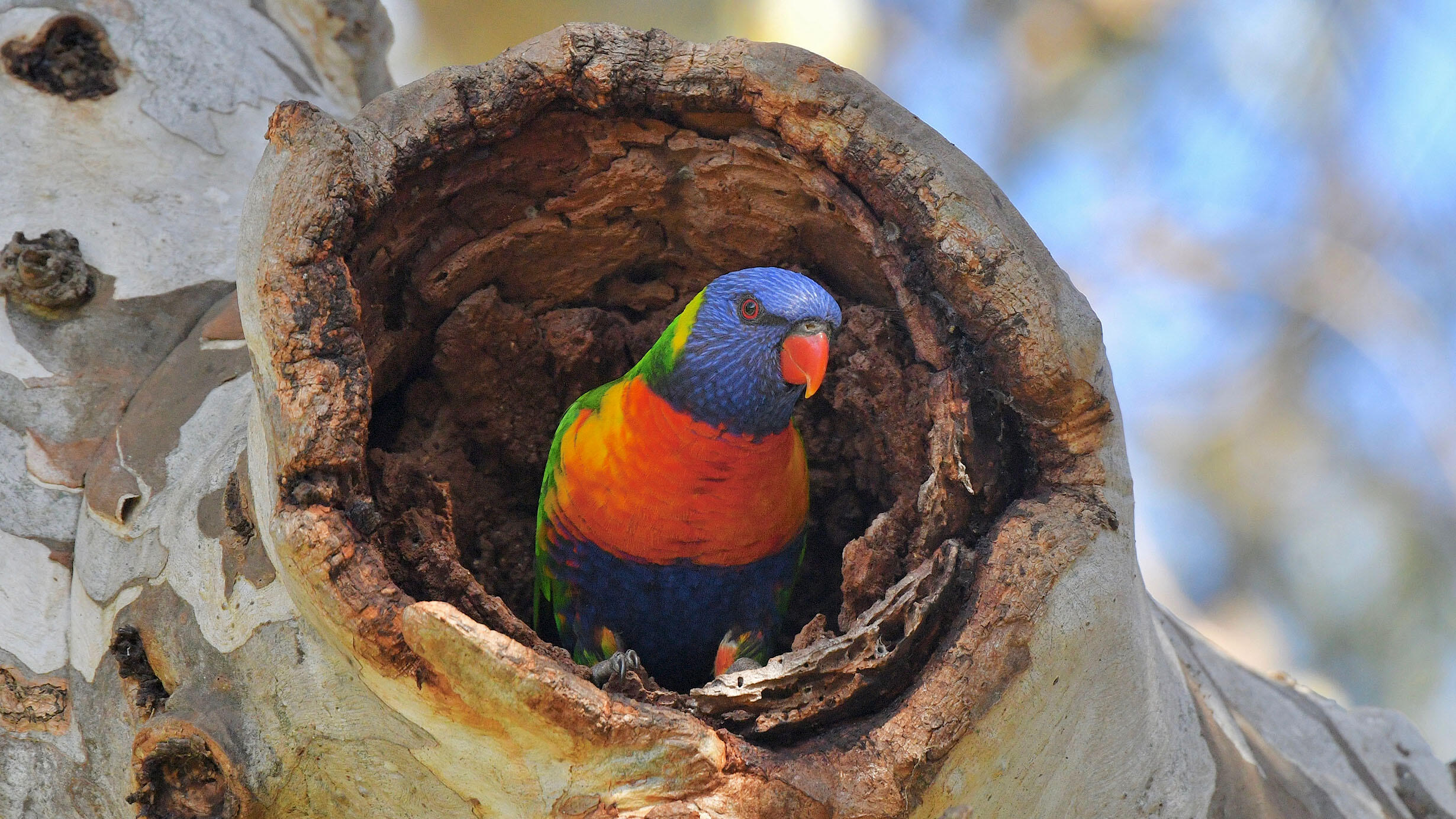 Australasian lorikeets come in a variety of colors, which help them to both blend into their surroundings and stand out to mates.
Australasian lorikeets come in a variety of colors, which help them to both blend into their surroundings and stand out to mates.D. Jenkins/Flickr
Some animals’ coloring helps them to stand out from their surroundings, while other species use theirs to blend in. The Australasian lorikeet has evolved to use its colorful feathers for both ends, according to a new study from Museum researchers.
The study, published this month in the journal BMC Evolutionary Biology and featured in the new special exhibition The Nature of Color, examines how color evolved in this flashy group of parrots and suggests that different plumage patches on the birds evolved independently, at different speeds and different times, to serve different purposes.
The birds’ faces and front sides come in a range of colors, from vibrant ultraviolet blue that only they can see to deep crimson and black, while their wings and backs tend to be all green.
“All birds need to balance being attractive to potential mates while having some kind of camouflage against potential predators,” said study co-author and Associate Curator Brian Smith. “So how do lorikeets get so colorful without being predated by lizards or hawks?”
Blickwinkel/Alamy Stock Photo
For the study, Smith and colleagues Jon Merwin, a Museum research assistant, and Glenn Seeholzer, a Museum research associate, took visible-light and UV-light photographs of 98 historic collections specimens of Australasian lorikeets from New Guinea, Australia, and surrounding islands. Using a special program that translates the color of the birds’ feathers into “bird vision,” they collected data from the plumage patches and modeled it within the tree of life to better understand what scenarios led to the evolution of different patches.
“The idea that you can take color data from Museum specimens, infer patterns, and gain a larger understanding of how these birds evolved is really amazing,” said Merwin.
Find out more about how animals use color in The Nature of Color.
The researchers found that the birds’ green plumage patches—which are most likely used as camouflage within the tree canopy from predators flying above—are present across long evolutionary timescales. Meanwhile, the bright rainbow of colors on their front sides evolved rapidly and independently of each other, and the researchers identified three plumage groups that evolved together through mosaic evolution, where subsets of traits evolve independently of others: the face and head, the back and wings, and the breast region and lower abdomen. The reason for this, they suspect, is so that different species, with different colored markings, can more easily find each other in the wild.